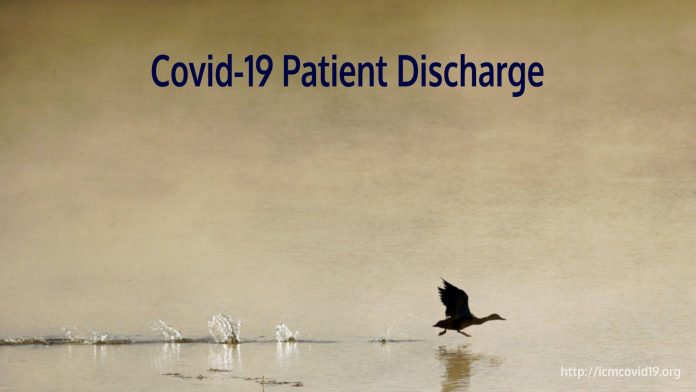Introduction
Discharge criteria for confirmed COVID-19 cases – When is it safe to discharge COVID-19 patients from the hospital or end home isolation?
Below is a review of existing guidance documents and protocols from national and international organisations from the ECDC
Table: Comparison of current guidelines on de-isolation of COVID-19 cases
| Symptomatic Cases, Hospitalised | |
|---|---|
| Italy: Ministero della Salute, Consiglio Superiore di Sanità | A COVID-19 patient can be considered cured after the resolution of symptoms and 2 negative tests for SARS-CoV-2 at 24-hour intervals For patients who clinically recover earlier than 7 days after onset, an interval of 7 days between the first and the final test is advised Note: Virus clearance is defined as viral RNA disappearance from bodily fluids of symptomatic and asymptomatic persons, accompanied by appearance of specific IgG |
| China: CDC Diagnosis and treatment protocol for COVID-19 patients (trial version 7, revised) | Patients meeting the following criteria can be discharged if: • Afebrile for >3 days • Improved respiratory symptoms • Pulmonary imaging shows obvious absorption of inflammation, and • Nucleic acid tests negative for respiratory tract pathogen twice consecutively (sampling interval ≥ 24 hours) After discharge, patients are recommended to continue 14 days of isolation management and health monitoring, wear a mask, live in a single room with good ventilation, reduce close contact with family members, eat separately, keep hands clean and avoid outdoor activities It is recommended that discharged patients should have follow-up visits after 2 and 4 weeks |
| Singapore: National Centre for Infectious Diseases (NCID) De-isolation of COVID-19 suspect cases: link | Discharge patient with advisory and clinic follow-up if indicated and with daily wellness calls until day 14 after last possible exposure, under the following conditions: • Afebrile ≥ 24 hours • 2 respiratory samples tested negative for SARSCoV-2 by PCR in ≥ 24 hours • Day of illness from onset ≥ 6 days OR • Alternative aetiology found (e.g. influenza, bacteraemia) OR • Not a close contact of a COVID-19 case • Does not require in-patient care for other reasons |
| USA: CDC Interim guidance for discontinuation of transmission based precautions and disposition of hospitalised patients with COVID-19: link | Negative rRT-PCR results from at least 2 consecutive sets of nasopharyngeal and throat swabs collected ≥ 24 hours apart from a patient with COVID-19 (a total of four negative specimens) AND resolution of fever, without use of antipyretic medication, improvement in signs and symptoms of illness Note: Decision to be taken on a case-by-case basis in consultation with clinicians and public health officials |
Conclusion
When deciding on criteria for hospital discharge of COVID-19 patients, health authorities should take into account several factors such as the existing capacity of the healthcare system, laboratory diagnostic resources, and the current epidemiological situation.
Sources & links
- ecdc.europa.eu | Discharge criteria for confirmed COVID-19 cases – When is it safe to discharge COVID-19 cases from the hospital or end home isolation? | PDF LINK

